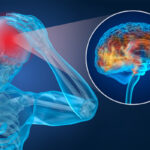One of the most misunderstood mental health conditions is Attention Deficit Hyperactive Disorder . How often have you heard someone in a moment of distraction flippantly remark, “Oh it’s just my ADHD,”? This is frustrating because ADHD is a serious disorder that isn’t limited to distractibility.
ADHD is one of the fastest growing behavioral health disorders, and to better understand the scope of it, we call out and correct five common misconceptions.
1. ADHD Only Impacts Focusing
False. It does much more.
While ADHD does disrupt focusing, it has a multitude of symptoms that can make everyday life for individuals very challenging. According to the Centers for Disease Control and Prevention (CDC), individuals with ADHD “…show a persistent pattern of inattention and/hyperactivity-impulsivity that interferes with functioning or development.”
To fully appreciate that summary is to absorb the last part: ADHD interferes with functioning or development. That sounds broad, but it can be excruciating to live with when you consider the symptoms:
- Impulsivity
- Inability to sit still
- Interrupting others
- Hyperactivity
- Executive functioning challenges
- Anxiety
Any combination of these symptoms or just one can make it impossible for someone to feel successful. For a child, it means falling behind in school and perhaps ostracization from peers. For an adult, it can mean an inability to hold down a job or be in a happy relationship.
2. Girls Don’t Get ADHD
This is also a myth.
Girls certainly can have ADHD, but boys are diagnosed at three times the rate as girls. The main reason for this is that girls present symptoms differently and therefore are referred less frequently to physicians.
3. ADHD Only Affects Children
Adults struggle with ADHD, too, but many aren’t aware that they have it. Diagnosing adults with ADHD can be difficult because of similar symptoms caused by other mental health disorders, including depression or anxiety. Among the many debilitating symptoms is a low tolerance for frustration, and a major consequence of this is a general feeling of instability.
4. ADHD = Laziness
Disinterest, disorganization, and lack of motivation are hallmarks of ADHD, and they are misconstrued as laziness. People with ADHD have problems with activation, and it’s simply something they can’t help. On the flip side, it’s not uncommon for these individuals to be dialed into activities they enjoy like sports, jigsaw puzzles, or assembling and building items.
Labeling someone as lazy is inaccurate and shaming, and can only damage that person’s confidence and self-esteem.
5. Children with ADHD Grow Out Of It
Can you “outgrow” ADHD? Some do, and some don’t. 70% of kids with ADHD will continue to have it as teenagers, and up to 50% will have it into adulthood.
It’s important to note that ADHD is very treatable and that the symptoms discussed here are most severe for those who aren’t diagnosed or receiving proper treatment. To put it in perspective, roughly 6% of adults have ADHD, but most haven’t been diagnosed and only a quarter pursue treatment.
Proven Therapeutic Treatments
The ADHD community has a large tent, which means that you’re not alone, and there are effective treatments. An individual often breathes a sigh of relief when they receive a diagnosis because they now understand why they have these symptoms, and there are interventions that can help. Chicago Mind Solutions has proven treatment options for ADHD, including neurofeedback and psychotherapy.
Contact us at info@chicagomindsolutions.com or call (847) 656-5080. We look forward to working with you!
Suggest linking to What Happens to Your Executive Functioning When You Have ADHD blog post once it’s published.






